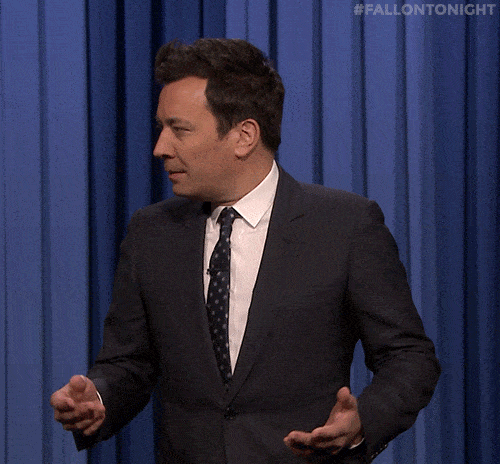Optimizing Email Send Frequency
Can you make sense of this confusing case study? 😕

Did You Know? Just 8% of our decision to buy is based on logic. The other 92% is based on emotion. (Source)
I came across a post on Reddit yesterday from a marketer who was perplexed by his client’s email marketing stats:
The gist:
Marketer hired to optimize email campaign performance.
Marketer increased open rate and clickthrough rate (CTR).
However, revenue per email is down around 50%.
Client thinks open rate and CTR are “inaccurate and for vanity.”
Client concurrently demanded email frequency to more than double.
And now the marketer is all like…
The stats:
Metric | Before | After | Change |
|---|---|---|---|
Subscribers | 75,000 | 75,000 | 0% |
Open Rate | 35-40% | 45-50% | +25-28% |
CTR | 0.3-0.6% | 0.8-1.0% | +67-167% |
Revenue / Email | $1,500-$2,000 | $500*-$1,000 | -50% |
Email Frequency | 3 / week | 7 / week | +133% |
Revenue / Week | $4,500-$6,000 | $3,500-$7,000 | -22% to +17% |
* Assumed a range of $500-$1,000 based on the comment “$1,000 on a good day.”
I also calculated a few other stats based on that data:
Metric | Before | After | Change |
|---|---|---|---|
Opens / Email | 26,250-30,000 | 33,750-37,500 | +7,500 (+26%^) |
Clicks / Email | 225-450 | 600-750 | +300-375 (+100%^) |
Clicks / Open | 0.08-1.7% | 1.6-2.2% | +50-100%^ |
Revenue / Open | $0.057-$0.067 | $0.015-$0.027 | -$0.04 (-65%) |
Revenue / Click | $4.50-$6.50^ | $0.85-$1.35^ | -$3.75-$5.25^ (-80%^) |
^ Approximated with some assumptions to narrow the range
Those are some pretty sharp declines in terms of per-email efficiency.

Gif by boomerangtoons on Giphy
What could be going on?
Well, there are a few things that aren’t totally clear from the post above (and which the comments hadn’t cleared up as of this writing).
We don’t know what changes were made to the subject line or email body, though we do know the emails still linked to the same type of page: an individual product listing, which was rotated each day.
However, we don’t know if the links pointed to the same products, which could affect conversion rates and revenues. No info is given on raw sales volumes, just total revenue.
We don’t know exactly when the email send frequency was increased in relation to the changes in email performance.
We don’t know if the increased frequency affected the unsubscribe rate.
Here are some thoughts or possible explanations I had from looking at this data.
Likely there were changes to the subject line to increase the open rate. While we don’t know if there were changes to the email body text, layout, or CTAs, we can see that people are clicking on links to product pages much more frequently (+50-100%) but they’re spending less. This probably means purchasing fewer items overall, especially given how huge the revenue decline is, but the revenue decline also could result from linking to cheaper products despite similar total sales volumes.
What could cause that?
Three things come to mind:
The new subject line, email text, layout, etc. encourage more window shopping and don’t pre-sell the products or convey urgency as well. According to the stat at the open of this email, a whopping 92% of our decision to purchase is based on emotion, so perhaps the new pitch just isn’t resonating.
The new email content/layout also could be creating a misalignment between expectations and reality for the buyer. Perhaps they’re opening the email and clicking on the product link with a certain expectation that the product isn’t meeting. That confusion kills conversion rates.
Though the marketer says they “narrowed down our list to just those who are actively engaging,” it doesn’t mention how that list is segmented and whether there were any changes made to that process.
This all leads me into the subject of today’s Data-Driven Marketing…
Optimizing email send frequency
Despite the putrid declines in per-email efficiency, it looks like the client is generating around the same total revenue (and they might even be making more money now, depending where reality falls in the ranges calculated above).
If the client is making more money, and as long as there aren’t significantly negative changes to unsubscribe rate, customer satisfaction, and other similar metrics clashing with other stated goals…
…could we maybe call the changes made to the email campaign an undeniable success?
Yesterday, we looked at vanity vs action metrics, and that’s a theme we find relevant again today.
Sure, those conversion stats leave a lot of be desired, especially compared to where they were at the beginning, but what’s the goal of your email marketing efforts?
To maximize your revenue per send?
To maximize your revenue per day?
To maximize your revenue, period?
For most marketers or business owners, it’s probably Option 3 (again, assuming you aren’t pissing your customers off).
The following chart (with completely made-up data) illustrates that point.

And let’s take a moment to talk about unsubscribe rate. If you’re bugging people more often, there’s a good chance you’ll annoy them to the point where they don’t want to hear from you anymore, resulting in a higher unsubscribe rate.
But there’s a pretty nice benefit to a higher unsubscribe rate:
You’re pruning your list to keep only the people who want to hear from you.
If your unsubscribe rate is high but your other metrics like open rate and CTR still look good, then you can feel confident that your message is resonating with the right people; they just weren’t the right people. Perhaps more can be done to convert those unsubscribers into customers, such as refining your message, improving your segmentation, or switching up your send times, but “unsubscribe rate” in a vacuum doesn’t tell you enough.
It all comes down to what your goals are. Usually, that’s to make money.
Oh, and if you have any thoughts, insight, experience, or clever puns about the email marketing case study we just covered, please reply to this email and let me know. I’d love to hear them!
Everyone say, “Hi!” to Elizabeth S 👋
Question: What’s the most random fact you know?
Elizabeth S’s: Answer: “I forget why this is the case but bananas technically are berries.”
Editor’s Commentary (from me, Bryan): OK so this is a new one that I’d never heard! I asked ChatGPT why bananas are considered berries, and this is what it said:
Bananas are classified as berries due to their botanical characteristics. According to botanical definitions, a berry is a fruit produced from the ovary of a single flower with seeds embedded in the flesh. Bananas fit this description because they develop from a flower with a single ovary and have their seeds contained within the flesh. Unlike the common perception of berries as small, juicy, and often edible fruits with a thin skin, the botanical definition encompasses a wider variety of fruits, including bananas, which might not match the common usage of the term "berry."
Because I’m not an expert on plant sex organs (even though I have a degree in Biology 😔) I also asked ChatGPT why an apple wasn’t a berry:
Apples are not considered berries but rather pomes. A pome is a type of fruit produced by flowering plants in the subtribe Malinae of the family Rosaceae. Apples have a structure that's quite different from botanical berries. They develop from the ovary as well as surrounding floral parts, which form the fruit's core that holds the seeds and the fleshy part outside the core that we eat.
Now you know.
ChatGPT-Generated Joke of the Day 🤣
Why don't seagulls fly over the bay?
Because then they'd be bagels!
Suggest a topic for a future edition 🤔
Got an idea for a topic I can cover? Or maybe you’re struggling with a specific marketing-related problem that you’d like me to address?
Just reply to this email and describe the topic.
There's no guarantee I'll use your suggestion, but I read and reply to everyone, so have at it!

